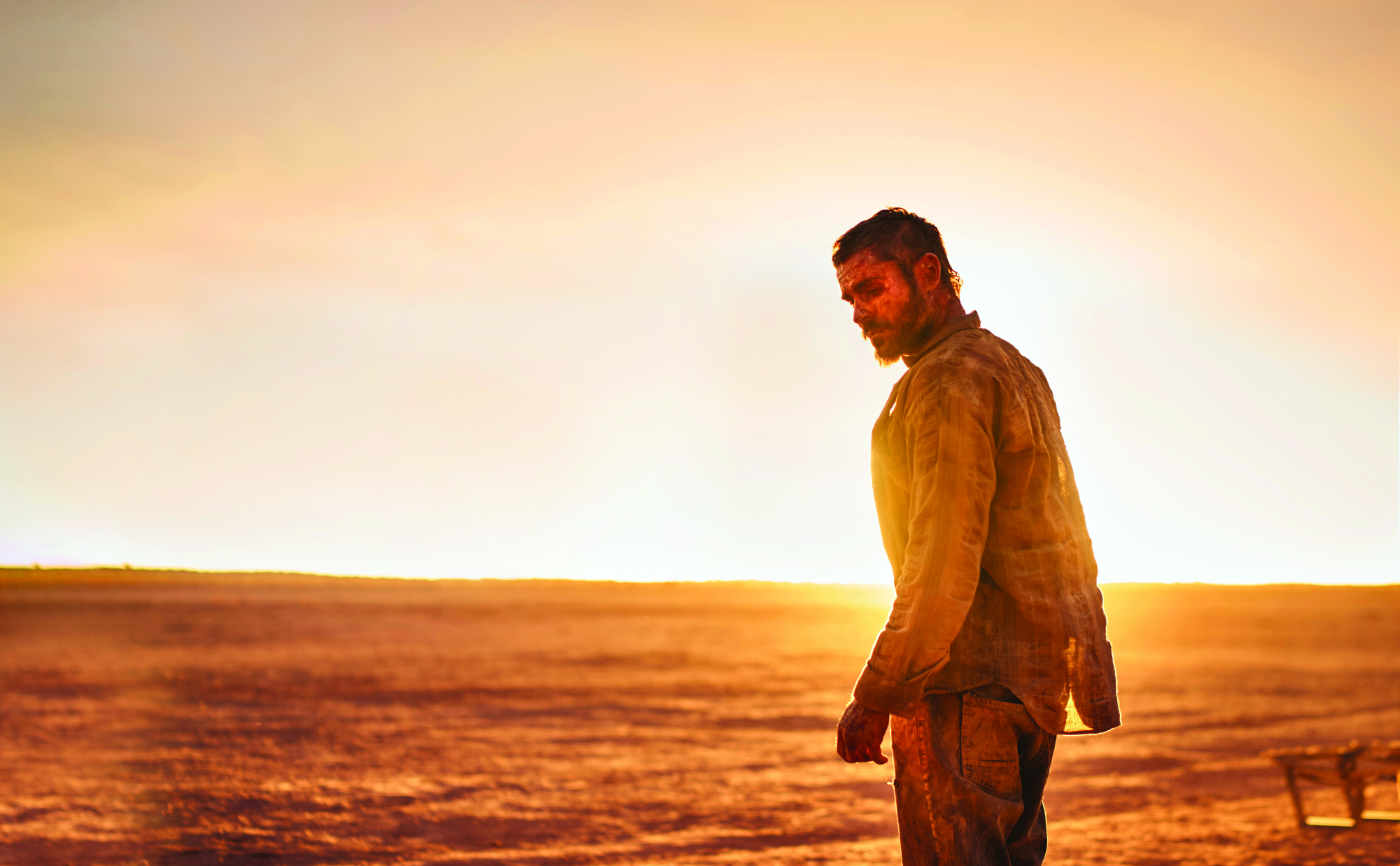Dystopian films have a history of framing the folly of humanity economically, capturing our downfall with devastatingly stark symbolism. Who can forget the now memed-beyond-count sight of a shirtless Charlton Heston on his knees in the sand, despairing at the vision of a sunken Statue of Liberty at the climax of Planet of the Apes (Franklin J Schaffner, 1968)? The revelation that his astronaut character, George, is indeed home, but that the Earth as he knew it is long gone, echoes through the ages: ‘You finally really did it. You maniacs! You blew it up! Arrgh, damn you – Goddamn you all to hell!’
A similar shiver was delivered almost ten years earlier with the haunting vision of Melbourne’s city centre standing ghostly silent, its trams halted in their tracks and a ‘Safety Zone’ sign upended, in On the Beach (Stanley Kramer, 1959); while George Miller’s epic Mad Max franchise shows us a world first teetering on the brink, and then increasingly plunged into our self-made ruin. This is the stuff great speculative fiction is made of.
Gold plays out in a fallen world in which it would seem we are, once again, our own worst enemies … The clue to humanity’s warped priorities is right there in the title.
Writer/director Anthony Hayes’ new movie Gold (2022) also plays out in a fallen world in which it would seem we are, once again, our own worst enemies. He recalls watching another apocalyptic drama, New Zealand production The Quiet Earth (Geoff Murphy, 1985), as a young man: ‘It was essentially one actor cruising around the end of the world […] and I remember that having a profound effect.’ That film’s protagonist, scientist Zac Hobson (Bruno Lawrence), has reason to believe that a project he was working on may have been responsible for the cataclysm.[1]Critic Anton Bitel summarises The Quiet Earth’s premise: ‘As Zac […] wanders through the eerily empty streets of Hamilton, New Zealand, it is as though the rapture has taken place, and he alone has been left behind. Except that, alongside this religious framework for what has happened, there exists a scientific one, as Zac starts to suspect that Operation Flashlight may itself have changed the world forever. Both possibilities – that Zac is caught in a human-made disaster, or trapped in a purgatory of faith – will run in parallel.’ Bitel, ‘Discover the Human Drama of This Post-apocalyptic Sci-fi’, Little White Lies, 25 June 2018, <https://lwlies.com/articles/the-quiet-earth-review/>, accessed 31 January 2022.
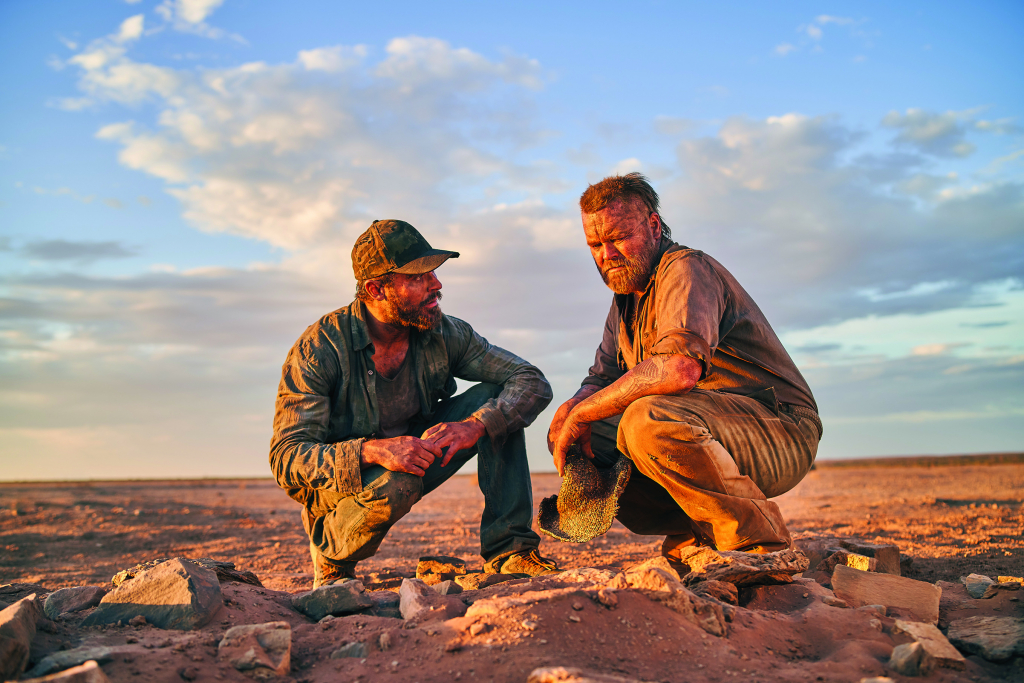
The clue to humanity’s warped priorities is right there in the title in Gold. Hollywood star Zac Efron plays an unnamed traveller (his character is credited as ‘Man One’) attempting to make his way across a desert wasteland to a compound that promises the hope of survival, along with some last skerrick of civilisation. To this end, he tasks a somewhat surly driver – again, unnamed, credited only as Man Two – played by Hayes. When a bust engine sees them temporarily stranded, a toilet break taken by Man One leads him to the remarkable discovery of a vast deposit of raw gold waiting to be uncovered.
Unlike in the later Mad Max movies, where survival sensibly revolves around fuel and water,[2]See Dave Crewe, ‘Cinema Science: Deconstructing the Machinery of the Mad Max Films’, Metro, no. 209, 2021, pp. 78–83. these greedy men become fixated on extracting this vast fortune from the dirt. To wit, Man One is left waiting in the baking heat while Man Two takes the now-repaired truck to fetch an excavator from a far-off community. But what would gold be worth after the collapse of the world as we know it? Would a useless lump of pretty rock still be prized if any economy survives, or is this a fool’s errand?
‘It has no use, right?’ Hayes agrees. ‘The only use it has is that we put value on it.’ He draws attention to a great little scene in the film in which Man One is confronted by a pesky scorpion and has cause to ponder, as it crawls on the enormous gleaming nugget, if the tiny creature has any concept of what the hunk beneath its eight scurrying legs is worth. ‘I was interested in talking about what we value as humans,’ Hayes continues. ‘We don’t need [gold]. We need water and we need food, and those things are scarce.’
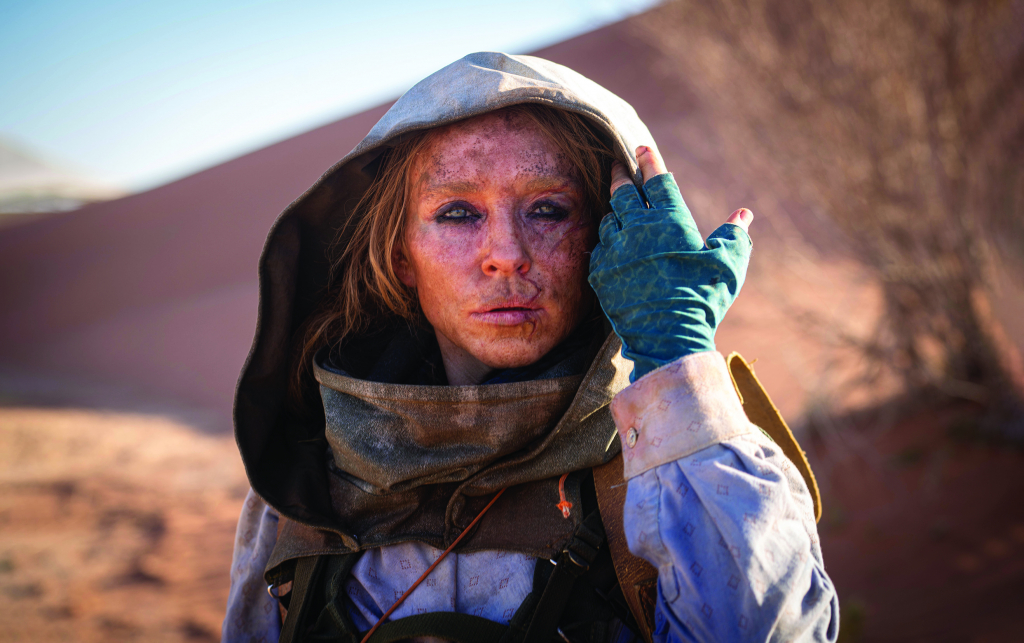
Gold was shot in twenty-two days – minus a couple, but more on that later – in punishing conditions across outback South Australia, particularly in and around former coalmining town Leigh Creek. Despite the similarity of the landscape, Hayes was not aiming to mimic a Mad Max–like Ozploitation sensibility. Rather, he wanted it to feel like this shattered landscape could be anywhere at all after the apocalypse. This is signalled by a Star Wars–like title card at the beginning that reads, ‘Some time. Some place. Not far from now.’
Hayes does not perform in his native Australian accent, instead faking a trans-Atlantic burr. Neither does the magnificent Susie Porter, when she shows up as a bad-arse Irish-sounding scavenger who may or may not exist, but who certainly gives Man One a run for his money. Hayes says this was a deliberate act on his and co-writer Polly Smyth’s part:
We made sure that we stripped out everything. They don’t have any names. You don’t know where they’re from. Humanity has got to a point where these things are no longer relevant. And so if we stop being human, then what’s left? Just stuff.
This is why you’ll hear Arabic music and see signposts in several languages in the scant outposts that remain, and why you won’t see any gum trees, which were studiously removed in post. ‘We deliberately avoided those iconic outback things and pulled the colour out of [the landscape] with the grade and the saturator to make it look like its own beast,’ Hayes offers. Part of this approach was born of the fact that the film was pre-sold to several territories around the world and wasn’t necessarily going to be shot in Australia. In fact, it wasn’t Hayes’ first choice at all. He was in Canada knee-deep in pre-production for another of his screenplays that he was directing, Stingray, two years before filming on Gold began when the gods of cinema had other ideas and the ensemble’s schedule fell apart. ‘We were almost there,’ he recalls. ‘I had my crew there; we just hadn’t shot a frame.’
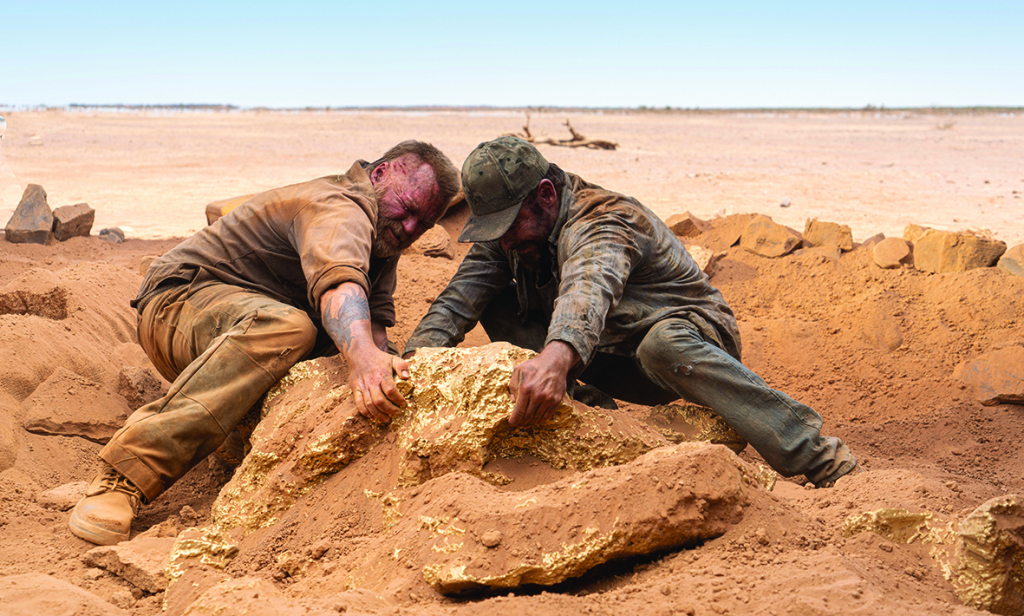
Describing the collapse as a ‘house of cards’ moment, Hayes stresses that these things aren’t entirely uncommon for a relatively untested director such as himself. ‘I’ve been pushing shit uphill with other movies, until you get that one person that wants to do it.’ That one person was Efron, who relished the challenge of facing down the unforgiving Australian sun in the back of beyond and deliberately dirtying up his pretty face. ‘Without Zac Efron, [the film] wouldn’t have happened,’ Hayes levels.
The director says that he will forever be grateful to his leading man for not only taking a punt, but also going all in. ‘He was so great; he just got on with it,’ Hayes recalls. ‘He was rolling around in the dirt and he broke his hand, and didn’t tell us.’ Efron was also up for shooting in the brief moments that were possible when several sandstorms rolled through. He was so accommodating and punctual to a T that Hayes knew there must be something seriously wrong when Efron didn’t show up to set one day. Checking in on the star’s campervan, Hayes discovered that hair and make-up designer Jennifer Lamphee’s incredible sunburn work, used to make the handsome leading man’s face increasingly haggard – a process Efron delighted in and pushed further – had caused a painful flare-up. As Hayes recalls,
He didn’t want to say it’s too bad to go ahead, because he didn’t want to be seen as a Hollywood star. And I was like, ‘Dude, you can’t do that. Your skin needs a rest.’
There were many challenges to overcome during the shoot, from having to scrap scouted locations that had inexplicably turned green after surprising levels of rainfall to sweltering 48 degree Celsius days in new locations off the beaten track.
Of course, with the already truncated shoot and Efron shouldering the majority of Gold’s screen time, that required some creative thinking. While a lot of the film was shot in roughly linear fashion, they still had an earlier sequence involving Man One fashioning a shelter from the debris of a downed plane, at which point Efron could still be called up to shoot a Nivea campaign if required. Hayes cannot praise Lamphee’s nimble work highly enough:
She’s sensational in her ability to turn that make-up around on a dime. I’ve never seen anything like it. [Most of the time] I don’t have any other actors I could shoot. If it’s not Zac, will it be another shot of a tree or a shadow or something? So when he was in the make-up chair, we were doing essentially nothing, you know […] And her turnaround time, and the perfection with what she did, was just extraordinary.
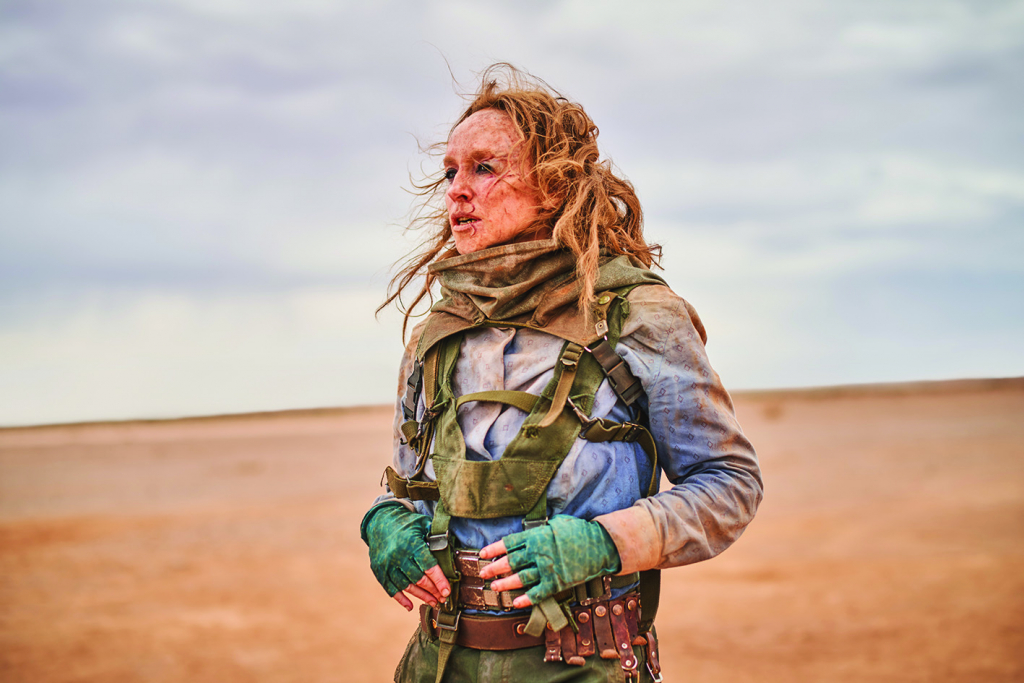
Lamphee also had to create an almost wraith-like appearance for Porter, who was equally game for being visually roughed up as well as donning the film’s coolest costumes (designed by Anna Borghesi). ‘We didn’t get quite as much time to do tests with Susie, and they came back and she still looked so beautiful, so I was pretty worried,’ Hayes chuckles. He had to call her and request they push a lot further: ‘She [was] like, “Oh great, darl. Let’s do it.”’
There were many challenges to overcome during the shoot, from having to scrap scouted locations that had inexplicably turned green after surprising levels of rainfall – a travail with which Miller is very familiar – to sweltering 48 degree Celsius days in new locations off the beaten track, to the sandstorms that swallowed the aforementioned two days whole. But hurdles had been erected from the off. Hayes and several department heads had to miss half of the three-week pre-production in quarantine due to South Australia enacting strict COVID-19 safety requirements – at that point, they weren’t 100 per cent sure they’d even score an exemption to begin shooting at all.
So we’re at Leigh Creek, just waiting. I thought, ‘Day one – we got this far,’ and then, what are the odds? There were no cases in South Australia at the time. We were very lucky, because we were so far out in the middle of nowhere. We were in a bubble, essentially: seven hours’ drive from Adelaide, where my mate Joel Edgerton was doing his film [The Unknown Man] in Adelaide at the same time, and his was shut down.
The wait chewed another half-day, but Hayes says it really was one of those all-for-one sets where everyone banded together. They managed to convince the local authorities to reopen an abandoned swimming pool, and also took over a ghostly old cinema where they’d play horror movies including the John Carpenter classic The Thing (1982). ‘There was a Blu-ray collection that got shipped to Leigh Creek, and we just put them on a laptop and hooked it up to the projector,’ Hayes reminisces. ‘It was great.’

While Carpenter’s Antarctica-set shapeshifting-alien-invasion film may not quite fit into the dystopia genre, it does involve distrusting allies being forced into a fight for survival in an inhospitable environment. In a way, Efron could be seen as Gold’s stand-in for Kurt Russell’s protagonist in the 1982 film – and, as far as Hayes is concerned, his leading man nailed the brief. Efron is apparently pretty happy with how it turned out too:
He came to make a very visceral, intense, different, weird and sparse movie, and Zac’s just so stoked that that’s what we’ve ended up with […] He holds this entire movie together with a really solid performance, and it’s not easy to do that when you’re the only person on screen for that amount of time. It takes a certain kind of actor to pull that off.
Hayes was extremely happy working side by side on this deliberately strange dystopia with co-writer Smyth, this being her first screenplay gig after considerable experience working in costume and wardrobe departments. ‘It was really good to have that fresh enthusiasm,’ Hayes says. ‘I’ve written a million things that haven’t gotten up and a few that have, and it’s really good to be challenged.’ He and Smyth bonded over Gold’s unconventional form, including resisting calls to layer in more explicit backstories for its wayward characters. ‘In something this sparse, [that approach] just sticks out like dog’s balls – it doesn’t work,’ Hayes says, adding:
It was really good to have someone there next to me [who] was of the same vision, going, ‘We can break the rules; we can do it; we’ve just got to be bold, and we’ve just got to stick to our guns.’ And it was great to have that partnership there.
When the world crumbles, the rules fall away, after all. And Hayes and Smyth fully embraced the collapse of reason unearthed by Gold, he says. ‘The lesson at the end of this fable is, is it ever really worth it? If [gold is] what you’re clinging on to in life, are you ever going to be satisfied?’
Endnotes
| 1 | Critic Anton Bitel summarises The Quiet Earth’s premise: ‘As Zac […] wanders through the eerily empty streets of Hamilton, New Zealand, it is as though the rapture has taken place, and he alone has been left behind. Except that, alongside this religious framework for what has happened, there exists a scientific one, as Zac starts to suspect that Operation Flashlight may itself have changed the world forever. Both possibilities – that Zac is caught in a human-made disaster, or trapped in a purgatory of faith – will run in parallel.’ Bitel, ‘Discover the Human Drama of This Post-apocalyptic Sci-fi’, Little White Lies, 25 June 2018, <https://lwlies.com/articles/the-quiet-earth-review/>, accessed 31 January 2022. |
|---|---|
| 2 | See Dave Crewe, ‘Cinema Science: Deconstructing the Machinery of the Mad Max Films’, Metro, no. 209, 2021, pp. 78–83. |
